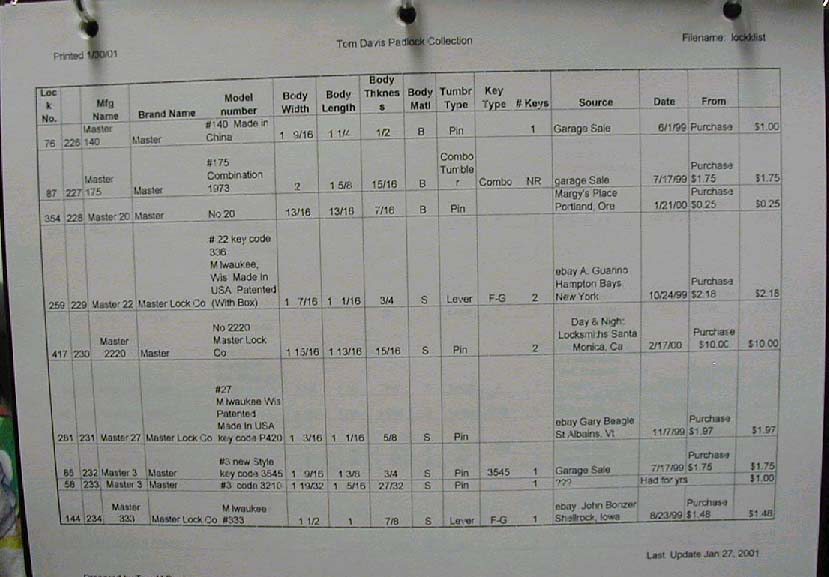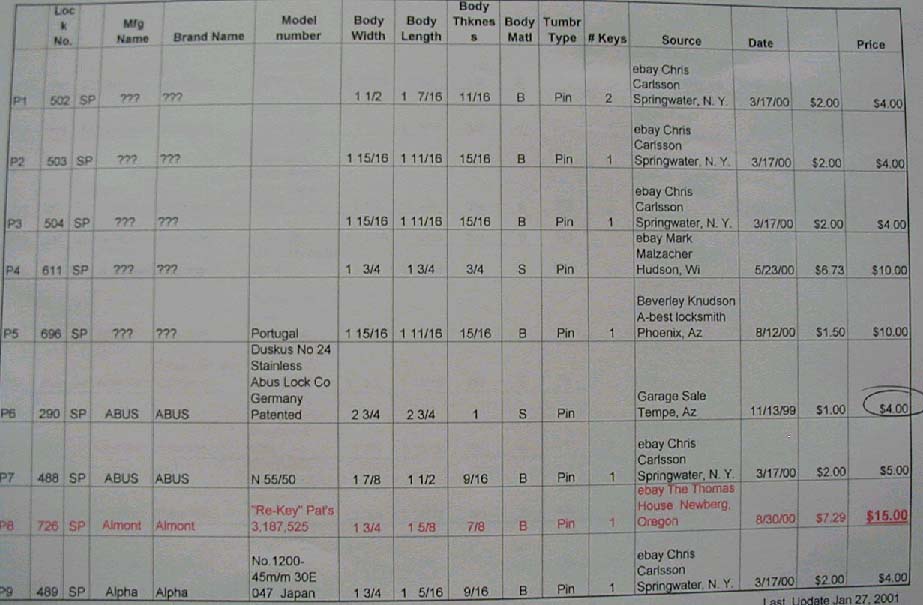
Records, Insurance & Security
From the very beginning, some record should be kept of each
lock you find. This should have at the very least a brief description, with date
and amount of purchase. This can take any form, but many collectors use database
software, and record many more details such as type, materials, size, markings,
keys, manufacturer, place purchased, sale price, any details and remarks. Be
creative!
If you record information about locks, it will eventually be necessary to tag or
mark them. Do not scratch or etch anything on the lock itself. The next owner
(and there will be one) will consider it damaged. Paper, plastic and metal tags
have all been used successfully. Museums often use white ink to write serial
numbers on their acquisitions.
Few collectors insure their locks. The critical question is value: lock values
are subject to many factors, and are not necessarily closely related to purchase
price. Insurance companies do not appreciate estimated values without supporting
evidence, and the premiums they require may not be acceptable. The most valuable
locks you buy should not displayed, except on special occasions. They should be
kept in a secure place, such as a fireproof safe or a safe deposit box. Keep in
mind that fire is one reason rare locks become rarer. All collectors have this
problem: many items can be destroyed in a single incident.

An
example of a collector's log.
